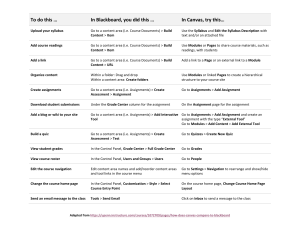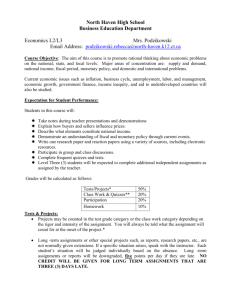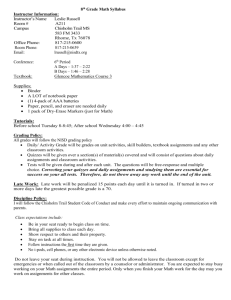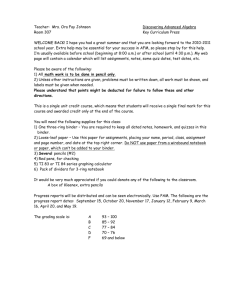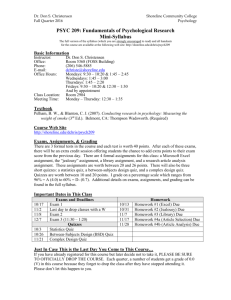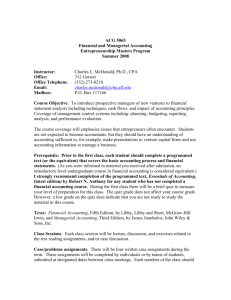GS1140: Theory of Problem Solving
advertisement
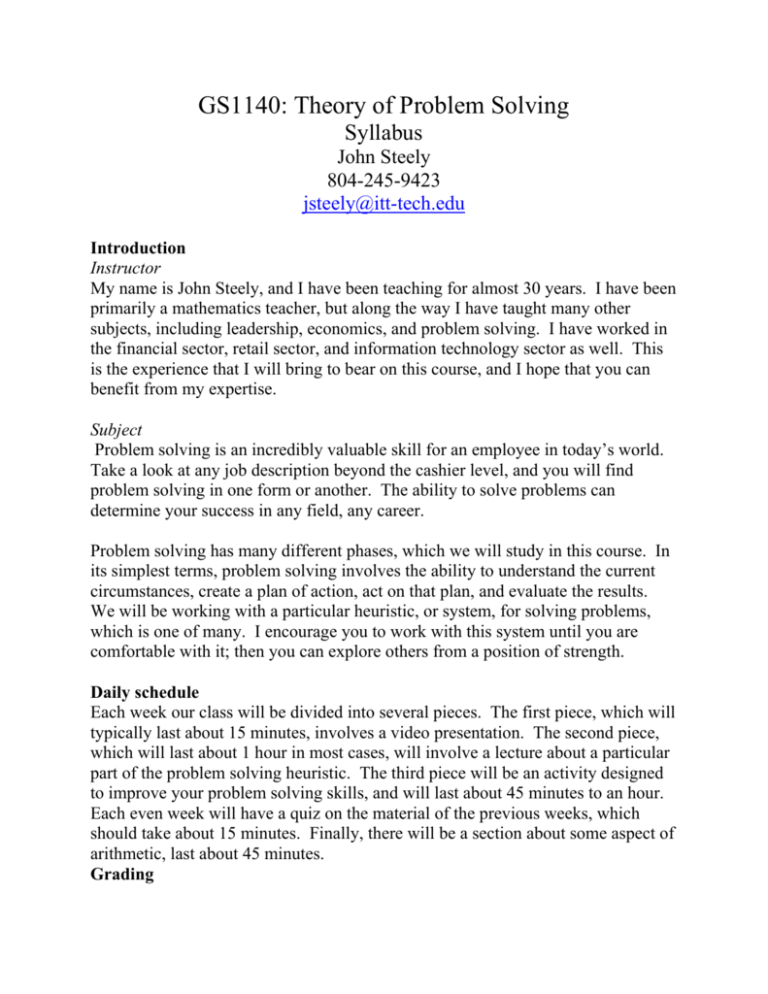
GS1140: Theory of Problem Solving Syllabus John Steely 804-245-9423 jsteely@itt-tech.edu Introduction Instructor My name is John Steely, and I have been teaching for almost 30 years. I have been primarily a mathematics teacher, but along the way I have taught many other subjects, including leadership, economics, and problem solving. I have worked in the financial sector, retail sector, and information technology sector as well. This is the experience that I will bring to bear on this course, and I hope that you can benefit from my expertise. Subject Problem solving is an incredibly valuable skill for an employee in today’s world. Take a look at any job description beyond the cashier level, and you will find problem solving in one form or another. The ability to solve problems can determine your success in any field, any career. Problem solving has many different phases, which we will study in this course. In its simplest terms, problem solving involves the ability to understand the current circumstances, create a plan of action, act on that plan, and evaluate the results. We will be working with a particular heuristic, or system, for solving problems, which is one of many. I encourage you to work with this system until you are comfortable with it; then you can explore others from a position of strength. Daily schedule Each week our class will be divided into several pieces. The first piece, which will typically last about 15 minutes, involves a video presentation. The second piece, which will last about 1 hour in most cases, will involve a lecture about a particular part of the problem solving heuristic. The third piece will be an activity designed to improve your problem solving skills, and will last about 45 minutes to an hour. Each even week will have a quiz on the material of the previous weeks, which should take about 15 minutes. Finally, there will be a section about some aspect of arithmetic, last about 45 minutes. Grading As stated in the ITT Tech syllabus, there are several components of the course grade: Category Weight Assignments 25% Problem Sets 10% Project 25% Quizzes 15% Presentation 15% Research 10% Total 100% Each of the components is explained below. Assignments Each week, 1 through 10, there will be two homework assignments. One homework assignment is based upon the class material. The second homework assignment will be based on a mathematics worksheet; the worksheet will contain 10 problems. In addition, there will 5 in-class assignments during the course. These assignments are designed to be completed in the class where they are handed out. Problem Sets There will be 4 problem sets. Each problem set should be submitted the following week. Problem sets will be short activities designed to review the material discussed in class, particularly the first four phases of the heuristic. Each problem set will be worth 10 points. Project There will be a course project, which will be completed as a team activity. The project will consist of four interim reports and a final presentation. The project will start in week 4, and the presentation will be in week 11. Each of the interim reports will be worth 10 points, and the presentation will be worth 20 points. Further details will be given when the project starts. Quizzes Each even week there will be a quiz consisting of 4 short answer questions on the material covered since the last quiz. Each question will be worth 5 points. Research Papers There will be 4 research papers, assigned in weeks 1, 3, 5 and 7. Each paper will be due the week after it is assigned. Research papers are designed to encourage the student to expand upon the material of the course; as such, research papers will require reading outside of the textbook. Each research paper must include material from 2 outside sources, only one of which can be either an encyclopedic or a wiki site. Each paper must include the addresses of the sites used, so that the instructor can, if desired, look at the material himself. Presentation In weeks 2, 4, 6, 8, 9, and 10 the students will create a presentation on a designated topic. The will consist of 3 – 5 Powerpoint slides about the specified topic. The presentation is due the following week. Each presentation is worth 10 points. Like the research papers, the presentations are designed to encourage outside reading. Thus, the presentations must include material from two outside sources, only one of which can be either an encyclopedic or wiki site. The addresses of the sites should be included in the presentation or its notes, but a citation slide is not counted towards the length of the presentation. Class Administration Late work I do not charge penalties for work submitted after the deadline. However, the grade for each assignment will be a “Z” or 0 until the assignment is submitted. Starting in week 3, the student will receive a grade report indicating what work has been done and what work is missing. Starting in week 7, a student can resubmit any work other than the project reports, providing the student has no Z’s on their grade report. The last day for submitting work is Wednesday of week 12. If a student misses a class, all handouts can be accessed on my student site. The address of the site is: www.steelystudents.info Professional behavior The goal of this course is to introduce you to some of what it means to be a professional. As such, I expect you to behave professionally in all aspects of the course. In other words: Treat each other with respect Control your language, dress, and behavior Turn your cell phones to silent mode or off Do not browse the internet in class





